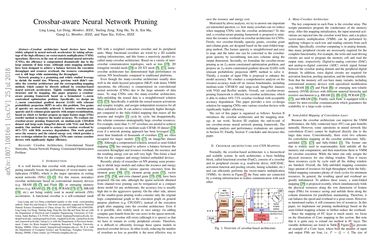Crossbar-aware neural network pruning
Crossbar architecture based devices have been widely adopted in neural network accelerators by taking advantage of the high efficiency on vector-matrix multiplication (VMM) operations. However, in the case of convolutional neural networks (CNNs), the efficiency is compromised dramatically due to the large amounts of data reuse. Although some mapping methods have been designed to achieve a balance between the execution throughput and resource overhead, the resource consumption cost is still huge while maintaining the throughput. Network pruning is a promising and widely studied leverage to shrink the model size. Whereas, previous work didn`t consider the crossbar architecture and the corresponding mapping method, which cannot be directly utilized by crossbar-based neural network accelerators. Tightly combining the crossbar structure and its mapping, this paper proposes a crossbar-aware pruning framework based on a formulated L0-norm constrained optimization problem. Specifically, we design an L0-norm constrained gradient descent (LGD) with relaxant probabilistic projection (RPP) to solve this problem. Two grains of sparsity are successfully achieved: i) intuitive crossbar-grain sparsity and ii) column-grain sparsity with output recombination, based on which we further propose an input feature maps (FMs) reorder method to improve the model accuracy. We evaluate our crossbar-aware pruning framework on median-scale CIFAR10 dataset and large-scale ImageNet dataset with VGG and ResNet models. Our method is able to reduce the crossbar overhead by 44%-72% with little accuracy degradation. This work greatly saves the resource and the related energy cost, which provides a new co-design solution for mapping CNNs onto various crossbar devices with significantly higher efficiency.
PDF Abstract

 CIFAR-10
CIFAR-10
 ImageNet
ImageNet